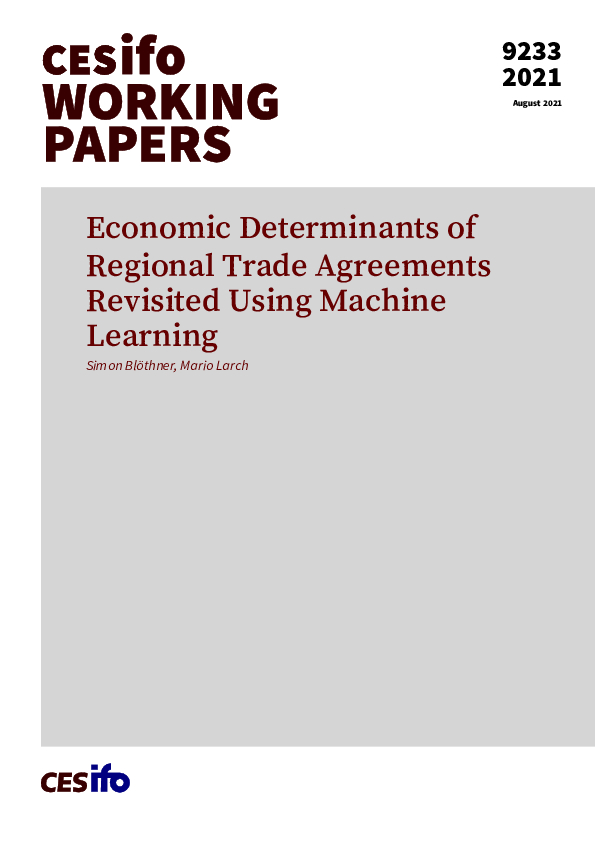Economic Determinants of Regional Trade Agreements Revisited Using Machine Learning
CESifo, Munich, 2021
CESifo Working Paper No. 9233

While traditional empirical models using determinants like size and trade costs are able to predict RTA formation reasonably well, we demonstrate that allowing for machine detected non-linear patterns helps to improve the predictive power of RTA formation substantially. We employ machine learning methods and find that the fitted tree-based methods and neural networks deliver sharper and more accurate predictions than the probit model. For the majority of models the allowance of fixed effects increases the predictive performance considerably. We apply our models to predict the likelihood of RTA formation of the EU and the United States with their trading partners, respectively.